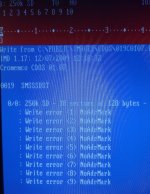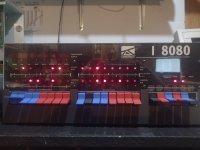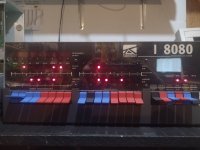Amardeep-AC9MF
Experienced Member
So I've verified that cdos107_5.tbz is a SSSD 5.25" CDOS that boots. However...it isn't IMD format but a raw dump. So I'm going to look around to see if there's an IMD version of it somewhere.
| VCF West | Aug 01 - 02 2025, | CHM, Mountain View, CA |
| VCF Midwest | Sep 13 - 14 2025, | Schaumburg, IL |
| VCF Montreal | Jan 24 - 25, 2026, | RMC Saint Jean, Montreal, Canada |
| VCF SoCal | Feb 14 - 15, 2026, | Hotel Fera, Orange CA |
| VCF Southwest | May 29 - 31, 2026, | Westin Dallas Fort Worth Airport |
| VCF Southeast | June, 2026 | Atlanta, GA |
Nice finds! I was going by Github and Dave's Old Computers archives. I didn't realize unix4fun had stuff beyond what was included with z80pack and I had recently browsed through DeRamp so should have realized that one at least. Well, that certainly solves the boot disk problem.
Double density disks can be used for both single and double density recording. You can use a double-sided disk for single-sided recording.So Now I need some clarification. I am noticing that I don't even have single density disks! I have SS/DD and DS/DD. Am I going to need single sided single density floppies to do this? I was just about to try writing the CDOS 1.07 image to disk when I realized this.
The Tandon 100 drive is capable of DS/DD disks, but yet it will still work with a single density controller?

Alternatively, you can use the Gotek/Flashfloppy combination. The IMD image file will need to be converted to either an IMG or HFE format file for use on the Gotek, using the HxC floppy emulator software.Ok, so if you got no errors writing the 2.17 then it was probably double density. That would explain why it just sits on the boot track with no activity. The 1.07 is definitely single density given the photo above, but yeah it looks like your controller is choking on that sector size. So it might work after your Adaptec arrives.


